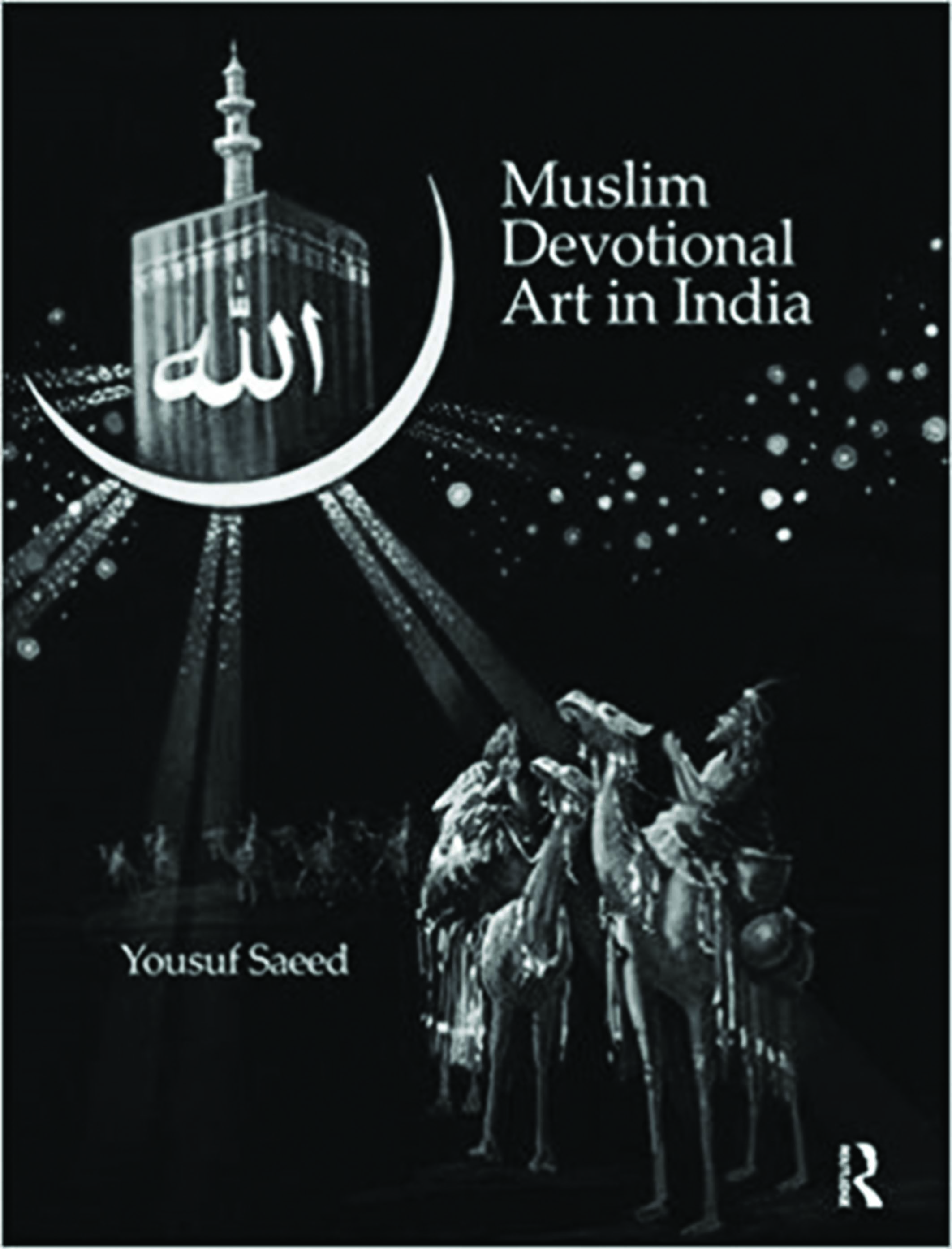Muslim Devotional Art in India explores the rather wide arc of the growth, spread, and ever so dynamic forms of Islamic religious art in India by bringing together a wide range of sources and methodologies in six sections. While Islamic art in India has traditionally drawn upon Central Asian imagery and is associated with the Mughal empire and later the eighteenth-century Princely States, Yousuf Saeed explores what he calls ‘Muslim devotional art’ through examining calendars, posters, and ephemera like prayer mats, show pieces etc., from the 20th century. Saeed’s journey for the research of this book finds its way in the text in to form of anecdotes that give the reader an insight into some very significant research questions that guided the author.
The introduction sets the premise of the book and promises a breakaway from the fairly trite trope of using visual culture as a means to criticize orthodoxy and eulogize syncretism. Instead, it brings to the fore some significant questions about transculturation and networks of circulation of ideas and practices in Muslim devotional art across the larger Islamic world. The six sections in this book constantly negotiate with the idea of encounter and efflorescence and the development of a new form of art that has borrowings from a plethora of socio-cultural and political movements across the subcontinent.

